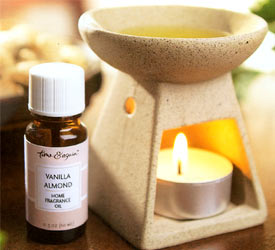Apart from the web and viral information, books are the true source of knowledge when it comes to aromatherapy. If you are a Do It Yourselfer, you cannot practice aromatherapy without books. This article will throw light on several popular books in the field of aromatherapy. Most of these books are written by famous aromatherapists, doctors or alternative medicine advocates who have years of experience in the world of aromatherapy and essential oils.
Popular books on aromatherapy: There are several books on aromatherapy and most of them are written by exceptional practitioners of the field. A few of them are patients who have come forward to write books based on the specific aromatherapy that cured them from a major illness or disease. Before we start to examine the books in the field, let me tell you why you should read aromatherapy books –
1. They are a true source of knowledge, as they are accepted by the society.
2. Some of the current aromatherapists may follow the rules of the book word for word. So, if you know the rules beforehand, you can tell your therapist what you want and do not want.
3. You will know what is true aromatherapy from the fake fragrance oil practices
4. You will gain deep knowledge in the field so much so that even if you don’t become an aromatherapist, you will be able to recommend it to friends and family
5. Books offer you a lot of recipes for aromatherapy blends. And the best part is, you can do all these from the comfort of your home
Below is a list of popular books in the science of this alternative medicine called aromatherapy. This is just an extract from what is available. To know the complete list of books, regularly read book reviews or search online.
1. The Complete Book of Essential Oils & Aromatherapy by Valerie Ann Worwood. A beginner’s must-have book. If you know a bit about aromatherapy and are confused where to start, this is the book to read. It gives you an introduction to essential oils, a chapter on various essential oils and over 600 recipes/synergies. You can read this book to know all about the science and also practice it at the convenience of your home.
2. The Illustrated Encyclopedia of Essential Oils by Julia Lawless. The best book for aromatherapy students, however, it will be useful to beginners even. The book gives an outstanding reference to over 160 essential oils and that means oils for particular remedies like skin problems, pain, common ailments, major diseases etc. The book features an introduction to aromatics, a therapeutic index consisting of essential oils and a section that has monographs of about 165 oils.
3. Advanced Aromatherapy by Kurt Schnaubelt. A 138-page book that is of the size of a textbook and features all and sundry information about the advanced stage of aromatherapy. It talks about Essential oil chemistry, Essential oil profile nuances, selection process and application of particular blends etc.
4. 500 Formulas for Aromatherapy by Carol Schiller & David Schiller. This is a book of recipes. If you know what is aromatherapy and what it can do to you, then, this is the book to look for. This book gives 500 formulas on aromatherapy blends that you may never or know otherwise. A compilation as this is very useful to one who is practicing aromatherapy.
5. Holistic Aromatherapy for Animals: A Comprehensive Guide to the Use of Essential Oils and Hydrosols with Animals by Kristen Leigh Bell. This book gives information on both aromatherapy, EO profiles and also on how to use aromatherapy for animals. It details on how to apply aromatherapy for dogs, cats, horses and other pet animals and the dos and don’ts of the therapy.








